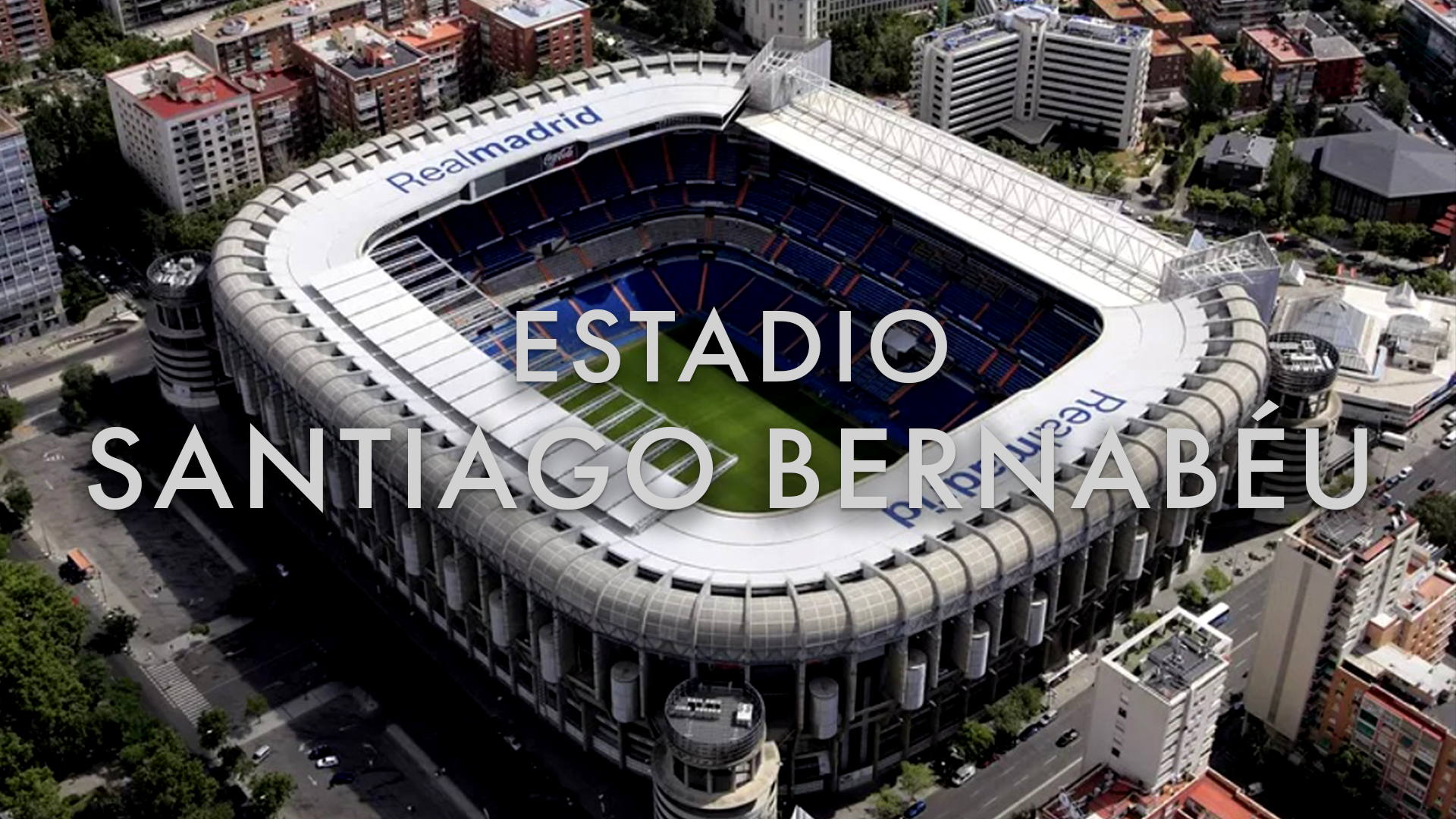Estadio Santiago Bernabéu
Estadio Santiago Bernabéu is a football stadium in Madrid, Spain. And it is the home stadium of Real Madrid. It opened in 1947 and has a capacity of 81,044, which makes it the second-largest stadium in Spain. Named after former player and president Santiago Bernabéu it is one of the world’s most famous football venues.
The construction on the stadium started in 1944 after Santiago Bernabéu and Rafael Salgado purchased the land adjacent to the Estadio Chamartín. Designed by architects Manuel Muñoz Monasterio and Luis Alemany Soler the stadium was inaugurated on 14 December 1947 with a match between Real Madrid and Belenenses. The initial capacity of the stadium was 75,145 of which 27,645 had seats and 47,500 for standing.

In 1953 the first major renovation occurred with the expansion to 125,000 capacity which added two towers and the third amphitheater by 1954. At the start of 1955 the stadium adopted its present name in honour of club president Santiago Bernabéu.
A year later on 19 april 1956 the record attendance of 129,690 watched the European Cup semi-final 1st leg between Real Madrid and AC Milan. The next year Bernabeu hosted it’s first European Cup final between Real Madrid and Fiorentina. Los Blancos won 2-0 and lifted their second European Cup.
In 1964 Santiago Bernabeu hosted the final matches of European Nations’ Cup including the final between Spain and Soviet Union.
In 1969 it hosted it’s second European Cup final between AC Milan and Ajax and a third final in 1980 between Nottingham Forest and Hamburg.
The next big changes came in the early 1980s with the hosting of the 1982 FIFA World Cup in Spain. The stadium had to adapt to the changing times and with this, architects Rafael Luis Alemany and Manuel Salinas were hired for the renovation of the stadium. The works lasted 16 months and cost 4.7 million dollars. The capacity was reduced to 98,000, roof was installed covering the first and second tiers of seating, the façade was remodeled, new electronic signs were installed, the press areas, locker rooms, access, and ancillary areas were all renovated. The stadium hosted four matches of the World Cup including the final between Italy and West Germany, making it the first stadium in Europe to host both a UEFA Euro final and a FIFA World Cup final.

In the 1990s, the stadium went through a large expansion and remodeling. The work concluded with the creation of an amphitheater on the west side and in the foundations, coupled with the existing building by using hydraulic jacks. In total, 20,200 upgraded seats were installed and four entrance towers were erected on the outside. With the new structure, the height of the stadium was increased from 22 m to 45 m. This caused problems during the winter, leaving two-thirds of the field in the shade and for this reason a polypropylene pipe network was installed under the pitch to keep the turf from freezing. After the renovation, the stadium’s capacity was 110,000 spectators. In the summer of 1998, the Santiago Bernabéu adopted an all-seating arrangement, bringing its capacity down to 75,328 spectators.
When Florentino Pérez became the president in 2000 he invested 127 million euros in five years by adding an expansion to the east side of the stadium and renovating interiors of the building. With this enlargement the capacity increased to 80,354.
In 2007 a month before 60th anniversary of the stadium the UEFA gave the Santiago Bernabéu an elite stadium status. The stadium hosted it’s last Champions League final in 2010 between Bayern Munich and Inter.
In 2018 the stadium hosted the second leg of the Copa Libertadores Finals between River Plate and Boca Juniors, making Santiago Bernabéu the first and only stadium to host the two most important premier continental cup finals.

Santiago Bernabeu is currently under renovations. The work is expected to last until 2022 and it will cost 525 million euros. When finished the height will be increased by ten meters and a roof will be added but the capacity will remain at 81,000. The club is also expected to sell the naming rights to the renovated stadium.





